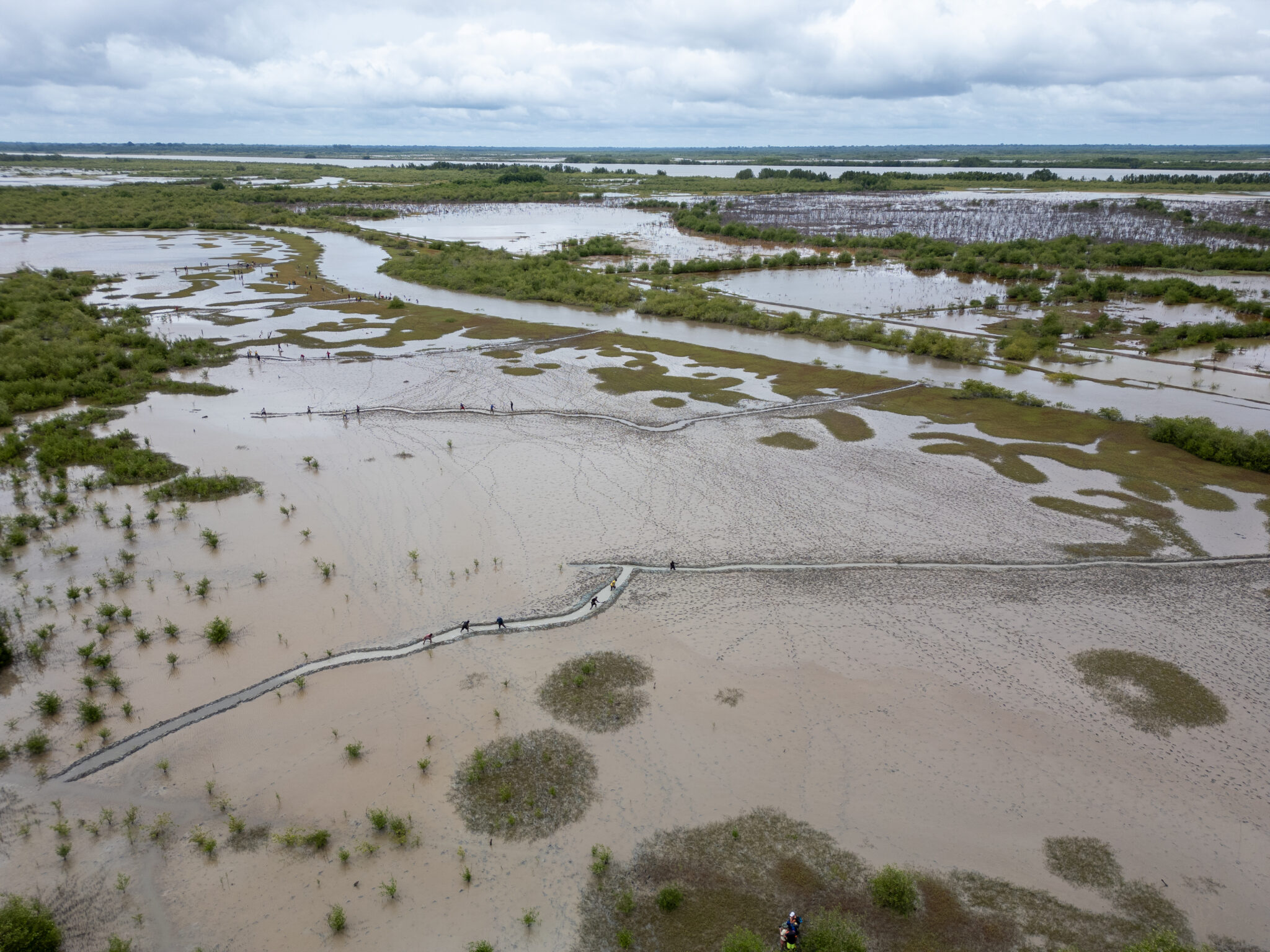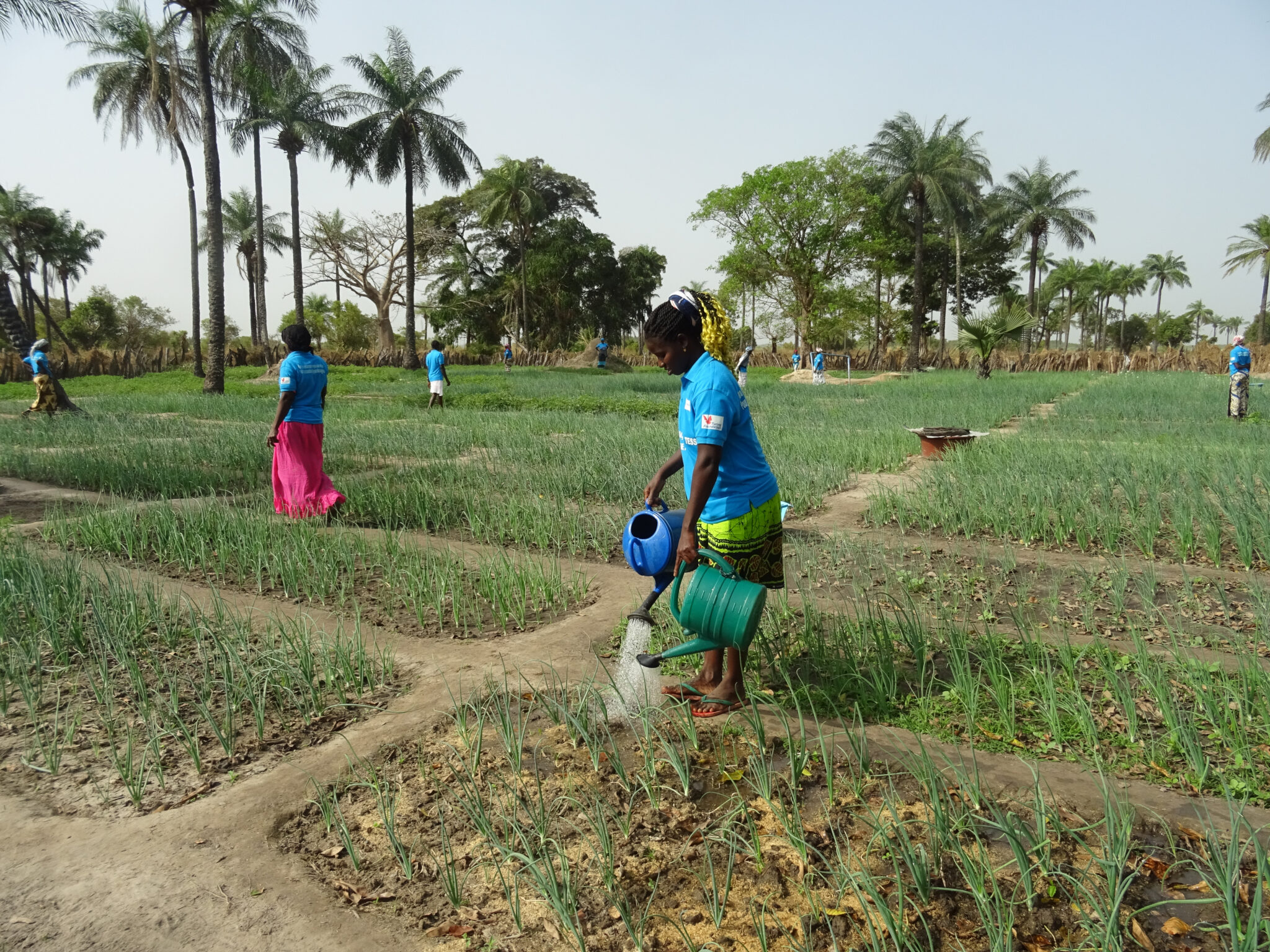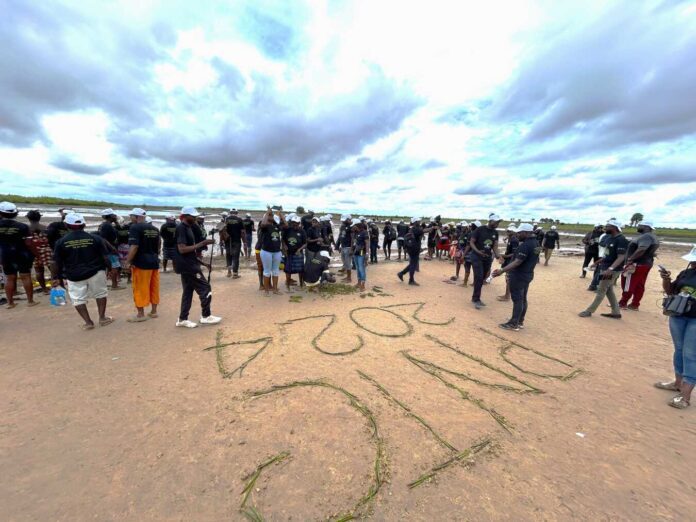Guinea-Bissau, a West African nation with mangroves covering nearly 10% of its territory, relies heavily on these ecosystems for biodiversity, fisheries, and coastal resilience [1]. The Cacheu River Mangrove Natural Park, established in 2000, spans vital habitats threatened by deforestation, erosion, and climate impacts [G3]. Enter the WACA Program, initiated in 2018, which focuses on mangrove restoration to combat these challenges. Recent efforts in 2024-2025 have spotlighted the park, with initiatives like the Community-Based Ecological Mangrove Restoration (CBEMR) emphasizing natural regeneration over mass planting [5][G2]. Drawing from factual data and expert insights, this piece examines the program’s effectiveness, integrating survival rates, community impacts, and critiques to assess if it represents authentic climate action or donor-driven optics [G1][G5].
Background on WACA and Cacheu River Mangrove Natural Park
The WACA Program integrates mangrove restoration into broader coastal management, addressing erosion and supporting livelihoods in vulnerable West African regions [G4][G7]. In Cacheu Park, efforts build on historical conservation, with mangroves acting as nurseries for fish and buffers against storms [1].

A 2014 social assessment highlighted deforestation risks from rice farming and the need for sustainable strategies [G11]. By 2024, the program launched a national campaign on July 26, restoring 224.3 hectares through hydrological interventions and community involvement [1]. Wetlands International reports 2,600 hectares naturally regenerated in Cacheu and Cantanhez parks via CBEMR, which restores hydrology to enable self-regeneration [5][6].

This approach contrasts traditional planting, focusing on barriers like disrupted water flows [2][G1]. Expert analyses note the park’s role in sequestering carbon and protecting species like manatees, but stress ongoing threats from climate change and human activities [G3][G5].
Evidence of Effectiveness
Restoration outcomes in Cacheu demonstrate measurable progress. In 2024, WACA restored 224.3 hectares, enhancing ecosystems that support fisheries and migratory birds [1]. CBEMR has enabled 2,600 hectares of natural regeneration, with 200 hectares showing rapid recovery [4][5]. Studies confirm CBEMR’s superiority, achieving better long-term survival by addressing hydrology rather than relying on planting [2][G2]. A World Bank analysis deems these efforts cost-effective for resilience, with mangroves sequestering carbon at high rates—up to four times that of rainforests [8][G10]. Biodiversity benefits include revived habitats for otters and crocodiles, while community engagement has integrated rice cultivation in restored areas [6][G14]. on social media, posts from organizations like the World Bank highlight these gains, noting improved livelihoods and ecological resilience [G4]. Mongabay’s 2024 report praises the holistic approach, involving locals to remove regeneration barriers, yielding sustainable results [3][G1].

Criticisms and Challenges
Despite successes, concerns of greenwashing persist. Critics argue WACA may prioritize donor visibility over root causes like global emissions, potentially perpetuating aid dependency [G8][G10]. A 2019 study on park land changes noted ongoing degradation from agriculture, suggesting restorations treat symptoms without systemic fixes [G6]. Local voices report mixed impacts: While biodiversity rises, zoning restrictions have disrupted fishing and resource access, affecting livelihoods [G11][3]. Degrowth advocates critique the growth-oriented model, favoring low-tech, community-led alternatives to avoid neo-colonial dynamics [G17]. Funding shortfalls are a key issue; despite high returns, mangrove projects attract less investment than others, risking short-term optics [G10]. X discussions echo this, with users calling for vegetation restoration over development to combat erosion, implying similar needs in Guinea-Bissau [G17]. Experts warn that without transparent monitoring, initiatives could falter, as seen in incomplete metrics on long-term survival [G12].
Emerging Trends and Constructive Solutions
Emerging trends point toward community-led models as solutions. Guinea-Bissau’s grassroots efforts, lauded in a 2025 Mongabay commentary, offer a global blueprint, emphasizing local knowledge and natural regeneration [G5][G9]. Tools like the Global Mangrove Watch platform track progress, enhancing accountability [4]. Wetlands International’s monitoring systems on abandoned rice fields measure regeneration rates, integrating selective planting where needed [7][G2]. To counter greenwashing, experts suggest hybrid approaches: blending WACA’s tech with indigenous methods for 20-30% higher survival rates, per adaptive management studies [G12]. Degrowth-inspired solutions include sufficiency economies, directing 50% of funds to local cooperatives and mandating independent audits [G8]. X posts reflect optimism, with calls for training “mangrove managers” and scaling successes from Myanmar, capturing 45,000 tons of CO2 yearly [G20]. Ongoing 2024-2025 initiatives by Wetlands International scale CBEMR, combining livelihoods with conservation for sustainable outcomes [5][G1].
KEY FIGURES
- 224.3 hectares of mangroves restored in Cacheu River Mangrove Natural Park in 2024 under the WACA Program, marking significant progress in mangrove restoration efforts (Source: WACA Program) [1].
- 2,600 hectares of mangroves naturally regenerated through Community-based Ecological Mangrove Restoration (CBEMR) in Cantanhez and Cacheu National Parks by Wetlands International with community involvement (Source: Wetlands International) [5][6].
- Guinea-Bissau’s mangroves cover nearly 10% of the country’s territory, vital for biodiversity and local livelihoods (Source: WACA Program) [1].
- 200 hectares restored in Guinea-Bissau using CBEMR approach, with rapid ecosystem recovery reported (Source: Mangrove Alliance) [4].
RECENT NEWS
- July 26, 2024: IBAP launched a national mangrove restoration campaign in Cacheu Park, highlighting the ecological and community benefits of mangrove restoration (Source: WACA Program) [1].
- November 2024: Mongabay reported on holistic restoration approaches in Guinea-Bissau focusing on removing barriers to natural regeneration rather than mass planting, involving local communities and addressing socio-economic drivers of degradation (Source: Mongabay) [3].
- Ongoing 2024-2025: Wetlands International and partners continue to scale up CBEMR techniques in Cacheu and Cantanhez parks, integrating local livelihoods and conservation (Source: Wetlands International) [5][6][7].

STUDIES AND REPORTS
- Study on ecological mangrove restoration in Cacheu shows CBEMR enables natural regeneration by restoring hydrology and removing barriers, achieving better long-term outcomes than traditional planting (Source: Mangrove Action Project report) [2].
- A World Bank study found integrating mangroves into coastal management in Guinea-Bissau is cost-effective for enhancing coastal resilience, but highlights the need for sustainable funding and policy support (Source: WACA Program) [8].
- Wetlands International’s reports emphasize that restoration success depends on community engagement, hydrological restoration, and selective planting when natural seed supply is insufficient (Source: Wetlands International) [5][6].
TECHNOLOGICAL DEVELOPMENTS
- Use of Community-Based Ecological Mangrove Restoration (CBEMR) methodology that prioritizes natural regeneration by hydrological interventions and community management rather than mass planting (Source: Wetlands International, Mangrove Alliance) [3][4][6].
- Application of the Global Mangrove Watch forest monitoring platform to track restoration progress and forest health in Guinea-Bissau and other African sites (Source: Mangrove Alliance) [4].
- Development of monitoring systems measuring restoration effectiveness, including regeneration rates on abandoned rice fields (Source: Wetlands International blog) [7].
MAIN SOURCES
- https://www.wacaprogram.org/article/over-220-hectares-mangroves-restored-guinea-bissau-thanks-waca – WACA Program news on restoration progress in Cacheu
- https://mangroveactionproject.org/wp-content/uploads/2021/06/WI-Guinea-Bissau-CBEMR-project-report-Cacheu-project-1.pdf – Mangrove Action Project report on ecological restoration in Cacheu
- https://news.mongabay.com/2024/11/how-a-holistic-approach-aims-to-heal-mangroves-in-guinea-bissau/ – Mongabay article on holistic restoration approach
- https://www.mangrovealliance.org/novel-mangrove-restoration-success-across-three-african-countries/ – Mangrove Alliance summary of CBEMR successes
- https://www.decadeonrestoration.org/stories/large-scale-implementation-best-practice-mangrove-restoration-guinea-bissau – Wetlands International report on large-scale restoration
- https://www.wetlands.org/case-study/to-plant-or-not-to-plant-guinea-bissau/ – Wetlands International case study on CBEMR
- https://www.wetlands.org/blog/restoring-mangroves-abandoned-rice-fields-guinea-bissau/ – Blog on monitoring restoration effectiveness in Cacheu
- https://www.wacaprogram.org/article/restoring-guineas-mangroves-coastal-resilience – World Bank study on mangrove cost-effectiveness in Guinea-Bissau
—
Synthesis on Effectiveness vs. Greenwashing:
The WACA Program’s mangrove restoration efforts in Cacheu River Mangrove Natural Park appear to be genuine and impactful climate solutions grounded in recent scientific best practices, notably the CBEMR approach. The program has achieved measurable restoration outcomes, such as restoring over 220 hectares in 2024 alone and enabling natural regeneration across thousands of hectares, which supports biodiversity, coastal resilience, and local livelihoods [1][5][6].
Rather than relying solely on mass planting, the project addresses underlying ecological challenges like hydrological disruption and socio-economic factors, involving local communities actively, which increases sustainability and ownership [2][3]. The use of advanced monitoring tools like the Global Mangrove Watch platform enhances transparency and accountability in tracking restoration success [4].
However, local voices report mixed experiences, including restricted access to resources in some restored areas, indicating that social impacts must be carefully managed to avoid undermining community livelihoods. Critics from degrowth and community-led perspectives argue that large-scale donor-driven projects risk perpetuating dependency and may not fully address root causes like global emissions or systemic economic drivers behind mangrove loss [3].
The World Bank’s cost-effectiveness study supports mangrove restoration as a viable climate adaptation strategy but stresses the need for integration into broader coastal management policies and long-term funding to avoid short-term, optics-driven interventions [8].
In conclusion, available evidence from 2024-2025 shows the WACA mangrove restoration in Cacheu is largely a genuine climate solution with scientifically supported ecological benefits and community involvement. Nevertheless, ongoing attention to social equity, funding sustainability, and addressing systemic environmental pressures is crucial to prevent greenwashing or superficial outcomes.


